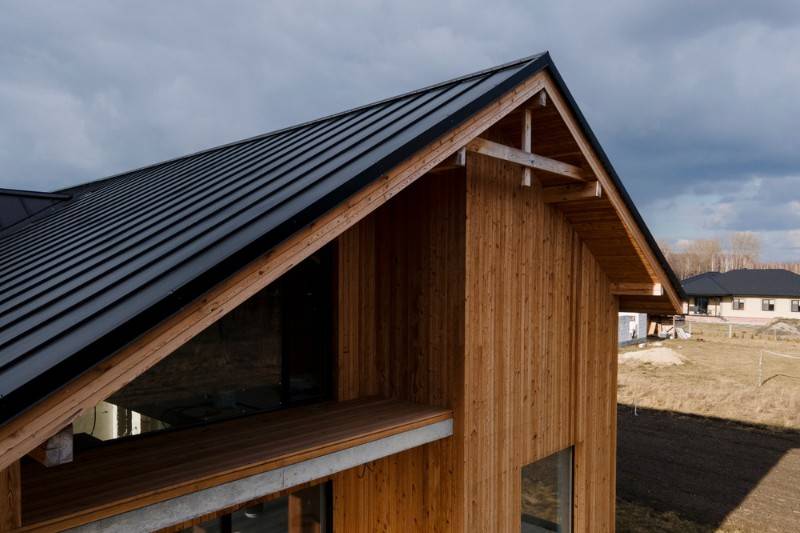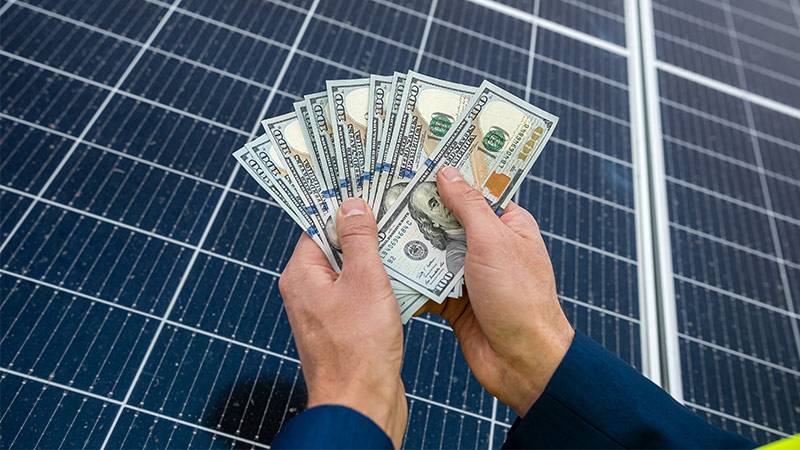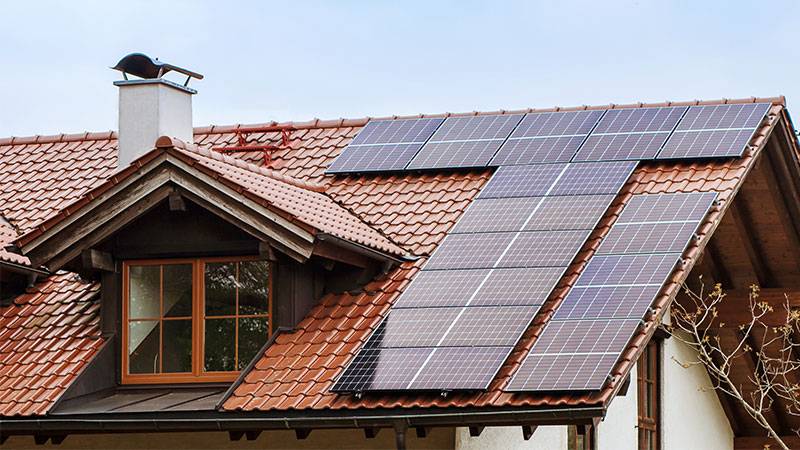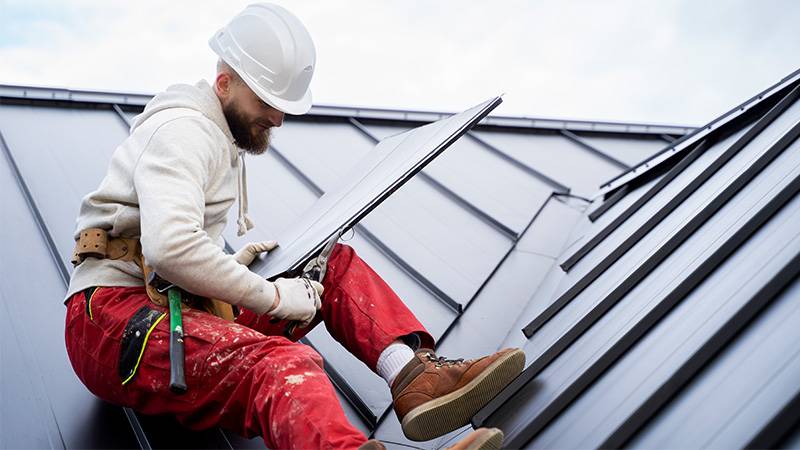In an age where sustainability intersects with technology, solar shingles emerge as a beacon of innovation in eco-friendly home construction. Merging the timeless utility of traditional roofing with the advanced capabilities of renewable energy, these shingles are more than just protective coverings for your home—they are mini power plants, elegantly harnessing the sun’s energy.
As we journey into a greener future, understanding the role and impact of solar shingles becomes crucial for homeowners seeking sustainable, energy-efficient solutions. This exploration into solar shingles offers a glimpse into a future where every home contributes to a cleaner, more sustainable world.
What Are Solar Shingles?
Solar shingles, also known as photovoltaic shingles, are designed to look like traditional roofing materials while functioning as solar panels.
Unlike bulky solar panel arrays, however, solar shingles blend seamlessly with your home’s aesthetics, providing a more integrated, clean energy solution. They consist of monocrystalline silicon solar cells, known for their high efficiency, embedded directly into shingles.
This integration enables them to convert sunlight into electricity, contributing to a home’s energy production without compromising on style.
Their energy output varies depending on design and technology, with each shingle capable of producing between 13 and 70 watts of electricity on average. Advanced models can potentially generate even higher wattage, ranging from 50 to 200 watts per shingle under optimal conditions.
The average size of a single solar shingle is typically about 12 inches wide by 86 inches long. In terms of weight, solar shingles are generally lighter than standard solar panels, with an average weight of around 13 pounds per square foot. This makes them light enough so that most roofs can handle them without needing any additional reinforcement.

How Do Solar Shingles Work?
The magic of solar shingles lies in their seamless blend of photovoltaic technology with conventional roofing aesthetics. At their core, these shingles employ monocrystalline solar cells, a type of high-efficiency, silicon-based photovoltaic cell known for its superior energy conversion capabilities.
Each shingle acts as a mini solar panel, capturing sunlight and transforming it into electrical energy through a process known as the photovoltaic effect.
When sunlight hits the solar cells within the shingles, it energizes the electrons in the silicon, creating an electrical current. This current is then captured and converted from direct current (DC) to alternating current (AC) through an inverter, making it suitable for home use.
A noteworthy aspect of solar shingles is their compatibility with existing home electrical systems. They can be easily integrated into the home’s grid, contributing to the overall energy supply and even potentially feeding surplus energy back into the grid.
This not only reduces the household’s reliance on traditional energy sources but also underscores the role of solar shingles in promoting renewable energy use and energy independence in modern eco-friendly home construction.
Moreover, the integration of solar shingles with home energy systems often includes monitoring capabilities, allowing homeowners to track energy production and consumption.
This feature enhances the appeal of solar shingles, making them a practical and visually appealing solution in the green homes and sustainable building sectors.

How Much Do Solar Shingles Cost?
On average, solar shingles can range from $21 to $25 per square foot. This pricing can vary based on factors like roof size, complexity, and brand chosen.
For instance, a typical 2,000-square-foot roof could cost between $42,000 and $50,000 for a full solar shingle installation. It’s essential to consider the total roof area rather than just the square footage of the living space, as solar shingles need to cover the entire roof for optimal performance.
In comparison to traditional solar panels, solar shingles tend to be more expensive due to their dual role as both a roofing material and an energy generator. However, they offer a more integrated and aesthetic solution, which is a significant consideration in eco-friendly home construction.
The potential savings from solar shingles are a key aspect of their appeal. While the upfront cost is higher, solar shingles can significantly reduce, if not eliminate, monthly electricity bills. Over time, these savings can compensate for the initial investment.
Additionally, solar shingles can increase a home’s resale value, making them a financially sound choice in the long run.
Maintenance costs for solar shingles are relatively low. They are designed to withstand various weather conditions and have a lifespan comparable to traditional roofing materials, often around 25-30 years. This durability, combined with their energy-saving capabilities, makes solar shingles a smart investment for those committed to renewable energy and sustainable living.
When considering solar shingles, it’s also essential to factor in potential tax credits and incentives. Many regions offer rebates and tax breaks for installing renewable energy solutions, which can significantly reduce the overall cost.
Thus, while the initial cost of solar shingles is higher compared to traditional roofing materials, their long-term benefits in energy savings, increased property value, and contribution to a sustainable future make them a worthwhile investment for eco-conscious homeowners.

Solar Shingles vs. Solar Panels
When considering renewable energy solutions for eco-friendly home construction, it’s essential to understand the differences between solar shingles and traditional solar panels.

Size
Solar roof shingles are considerably smaller than traditional solar panels. Typically, a solar shingle measures about 12 inches wide by 86 inches long, tailored to blend with standard roofing materials.
In contrast, a typical solar panel is much larger, around 39 inches wide by 65 inches long, designed for optimal energy capture.
Efficiency
Solar panels are typically more efficient than solar shingles. Traditional solar panels, especially those made from monocrystalline silicon, have efficiency ratings up to 24%, meaning they convert a higher percentage of sunlight into electricity.
In contrast, solar shingles made from copper indium gallium selenide (CIGS) or monocrystalline cells have efficiency rates ranging between 14% and 18%.
Although advanced solar shingle models are narrowing this gap, solar panels still lead in pure energy production capacity.
Output
Solar shingles typically generate less energy than solar panels, with an output ranging from 13 to 70 watts each. In contrast, high-quality solar panels can produce over 400 watts per panel.
Consequently, more solar shingles are required to match the power output of a single, high-powered solar panel.
Installation
Solar panels typically require a mounting system and are installed on top of existing roofing, which can be more complex and time-consuming.
Solar shingles, on the other hand, are part of the roof itself and are installed much like traditional shingles, offering a simpler and more integrated installation process.
Aesthetic
This is where solar shingles shine. Designed to mimic traditional roofing materials, they offer a seamless, integrated look, unlike solar panels that are more noticeable and often require rack mounting.
Solar shingles blend in with the architectural design of your home, making them a preferred choice for homeowners prioritizing aesthetics.
Service Life
Solar panels generally have a longer service life, lasting 25-40 years with proper maintenance. Solar shingles, while durable, tend to have a slightly shorter lifespan, typically up to 20 years.
This difference is due to the distinct materials and exposure conditions each type of solar technology endures.
Cost
The cost of installing solar shingles can be notably higher than that of solar panels. For example, a 10kW system using solar shingles may cost over $50,000, while a similar system using solar panels typically averages a little over $28,000.
This significant difference in pricing reflects the newer technology and dual functionality of solar shingles compared to the more established and efficient solar panel technology.
Pros and Cons of Solar Shingles
Pros
Cons
- Aesthetic Integration: They blend seamlessly with traditional roofing, offering a sleek and unobtrusive look.
- Increased Property Value: Solar shingles can enhance a home's market value due to their modern technology and energy efficiency.
- Environmental Benefits: By generating clean, renewable energy, they reduce carbon footprint and promote sustainable living.
- Durability: Often more durable than standard roofing materials, providing long-term value.
- Energy Savings: Contribute to reduced electricity bills by harnessing solar power.
- Ease of Installation: For new constructions or roof replacements, they offer a streamlined installation process.
- Roofing and Energy Solution: Dual functionality as both roofing material and solar energy generator.
- Energy Independence: Help in reducing reliance on traditional energy sources.
- Incentives and Rebates: Potential eligibility for tax credits and solar incentives.
- Technological Advancement: Represent the cutting-edge in solar and roofing technology.
- Lower Efficiency: Typically less efficient in energy conversion compared to traditional solar panels.
- Higher Initial Cost: More expensive upfront due to their dual functionality and newer technology.
- Installation Complexity: Can be more complex and time-consuming to install, especially for retrofits.
- Limited Style Options: Fewer design and brand options available compared to solar panels.
- Availability and Expertise: Not as widely available; requires specialized installation expertise.
- Roof Suitability: May not be suitable for all roof types or conditions.
- Technology Maturity: As a newer technology, they may not have the same track record and reliability as established solar panels.
- Repair and Maintenance: Potentially higher costs and complexity in maintenance and repairs.
What to Consider When Choosing Solar Shingles for Your Home
When choosing solar shingles for your home, several key factors should be considered to ensure the best fit for your energy needs and home’s design:
Roof Suitability
Roof suitability is crucial when considering solar shingles. It’s important to evaluate your roof’s size, shape, and orientation for optimal solar gain. South-facing roofs are ideal as they receive the most sunlight throughout the day, maximizing energy production.
Additionally, roofs with minimal shading from trees or other structures are preferable to avoid obstruction of sunlight, ensuring efficient solar shingle performance.
This assessment ensures that the installation is both feasible and effective for your home’s unique characteristics.
Aesthetic Preferences
Aesthetic preferences play a crucial role when choosing solar shingles. It’s essential to select a style that harmonizes with your home’s architectural design.
Solar shingles come in various designs, from sleek, modern looks to more traditional appearances. The right choice should complement your home’s character, enhancing its overall curb appeal while providing solar functionality.
This consideration ensures that your solar investment not only meets energy needs but also adds to the aesthetic value of your property.
Energy Requirements
Understanding your home’s energy requirements is key to determining the number of solar shingles needed.
Calculate your monthly and annual energy usage, considering all electrical appliances and usage patterns. This data helps estimate the size of the solar shingle system required to meet or offset your home’s energy consumption.
Accurate calculations ensure your solar shingle system is neither underpowered nor unnecessarily large, optimizing efficiency and cost-effectiveness for your specific energy needs.
Warranty Options
Selecting solar shingles with strong warranties is essential. A robust warranty offers assurance against defects and performance issues, ensuring your investment is protected over time.
Longer warranty periods, typically ranging from 20-30 years, not only provide peace of mind but also indicate the manufacturer’s confidence in their product’s durability and long-term performance.
This consideration is critical for safeguarding your renewable energy investment and ensuring reliable, uninterrupted solar energy production for your home.
Cost and Budget
Considering the cost and budget is vital when investing in solar shingles. The initial installation cost can be substantial, but it’s essential to balance this against the long-term energy savings solar shingles offer.
Additionally, researching available tax credits and rebates can significantly reduce the overall expense. These incentives can make solar shingles a more affordable option, aligning with your financial plans while contributing to sustainable energy use in your home.
Careful budgeting and awareness of financial aids can make the transition to solar energy more accessible and cost-effective.
Energy Efficiency Ratings
Choosing solar shingles with higher energy efficiency ratings is key for maximizing energy output per square foot.
High-efficiency shingles convert more sunlight into electricity, enhancing your home’s overall energy production.
This efficiency is crucial for getting the most out of your solar investment, especially in areas with limited roof space.
It ensures that each shingle contributes significantly to your home’s power needs, making your switch to solar energy both effective and efficient.
Brand Reputation
Selecting a reputable brand for solar shingles is crucial. Renowned brands are typically associated with higher quality and more reliable solar shingle technology.
Researching and choosing a well-established brand ensures you’re investing in a product that has been tested for durability and performance.
A brand with a strong reputation often provides better customer service, warranty terms, and post-installation support.
This reassurance is important, as it ensures long-term satisfaction and optimal functioning of your solar shingle system.
Best Solar Shingle Brands
Tesla
Known for its sleek, modern design, Tesla Solar Roof integrates solar cells into the roofing material. It’s a bit expensive but offers a futuristic look and good durability.
CertainTeed
A long-standing leader in roofing technology, CertainTeed offers products like Apollo Shingle II and Apollo Tile II, which blend with asphalt and concrete roofs, respectively. They provide good efficiency and a variety of design choices.
Suntegra
They offer a 2-in-1 roof and solar solution with a discreet, elegant design. Suntegra has options for both shingle and tile roofs.
Luma
These shingles are recognized for their high electrical efficiency and luxurious appearance. Luma offers a product with a high conversion efficiency and a robust, durable design.
Timberline Solar by GAF Energy
A newer player in the market, Timberline Solar is recognized for its innovative integration into existing roofing systems, providing a practical and aesthetic solar solution.
Conclusion
Solar shingles represent a blend of aesthetic elegance and eco-friendly technology, offering a compelling solution for sustainable home construction. They merge seamlessly with traditional roofing, enhancing property value while contributing to environmental conservation.
As solar technology evolves, homeowners have various options from reputable brands, each with unique features and benefits. Considering solar shingles as part of your renewable energy strategy is a step towards a greener, more energy-efficient future. Explore these innovative solutions to transform your home into a sustainable power source.
Ready to go solar? Start exploring your options today.



